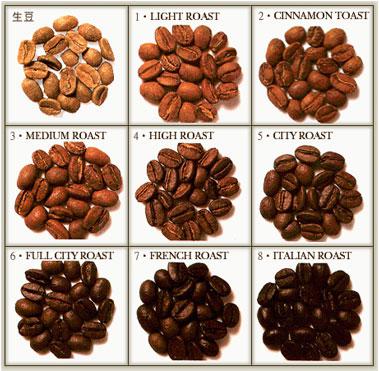Cupid Coffee introduces Cupid Coffee Flavor Cupid Coffee characteristics
Today, I finally found a coffee bean with high performance-to-price ratio. She has 30% rose summer high-quality pedigree, is a coffee from the Baru volcano region of Panama's Bogut boquete region, has a very beautiful name-Cupid, in Greek mythology, Cupid stands for love.
This coffee, composed of Rosa, Kaddura and Kaduai, grows in the volcanic area at an altitude of 1600 meters. The treatment plant uses fine honey treatment and traditional washing. The special local microclimate of Panama leads to abundant rainfall in this area and a large temperature difference between day and night, coupled with the unique volcanic soil of the volcanic area, as well as meticulous harvesting and fine treatment. It makes this coffee perform well in terms of richness, acidity and aroma of alpine black tea.
The Baru volcano is not only the highest mountain in Panama, but the sediments created by early volcanic activity and eruption bring a large amount of very fertile soil, which is rich in nutrients, especially rich in phosphorus and sulfur, mixed with clay and unique climate patterns, making the region a suitable environment for the growth of high-quality coffee. Dense forests and a large number of species form the overall biodiversity.
About 50 coffee farmers here form a small cooperative, all of which produce coffee in the traditional way of Bogut-allowing it to grow in a near-natural environment. Although the yield is not high, it can maintain a rich ecological environment, and soil quality can be maintained or even improved. The natural planting method is not only beneficial to the environment, because the coffee fruit grows slowly, so it is easier to grow high-quality coffee beans with good flavor. Farmers harvest complete coffee berries by hand and send them to nearby CafedeEletaS.A. For post-processing, the treatment plant is about 4 kilometers away from the farm, and a modern laboratory is set up for cup test tube and manual screening.
What is more surprising is that on the basis of very excellent quality, the very people-friendly price of this coffee bean makes the performance-to-price ratio of this coffee bean. What is special about this coffee bean is that it is made up of three varieties, 30% of which is the famous rose summer, giving this coffee a distinct rose summer flavor.
According to the information obtained from the raw bean merchant, due to the historical reasons of the manor, in order to pursue yield at that time, the early rose summer varieties were mixed with the coffee trees of Kaddura and Kaduai, and in order to facilitate picking, coffee farmers did not reclassify them, but directly mixed the three varieties. After that, as Rosa rose to fame and the price soared, the processing plant began to carry out fine washing treatment + honey treatment for such a coffee bean. The processed coffee tastes clean, emphasizing bright and lively acidity, as well as clear fruit flavor and floral aroma. honey treatment also increases sweetness and caramel taste.
Because of the particularity of this Cupid in variety, we use moderate shallow baking to complete the final flavor trend of this bean, so that it not only has the unique floral aroma, white grape, caramel, honey and black tea, but also has the sweetness and smoothness of honey, the aroma and finish are very long-lasting, and the taste is quite amazing.

Important Notice :
前街咖啡 FrontStreet Coffee has moved to new addredd:
FrontStreet Coffee Address: 315,Donghua East Road,GuangZhou
Tel:020 38364473
- Prev

Rich aroma with excellent acidity Burundian coffee flavor, characteristics, taste and manor introduction
Burundi coffee was introduced by Belgian colonists in 1930. Unfortunately, many of these farms are on the border with war-torn Rwanda, putting pressure on coffee production. Coffee production in Burundi: Burundian coffee is now grown only on small farms. Almost all the coffee produced in Burundi is Arabian coffee beans, while
- Next

Characteristics of Ecuadorian coffee beans Ecuadorian coffee manor
The Arabian Coffee Tree was first introduced to Ecuador in 1952 and its coffee is of good quality, especially the coffee harvested in early June. Ecuadorian coffee beans can be divided into two varieties: Galapagos and Gigante, both of which have the characteristics of large granules and heavy weight. Ecuadorian coffee can be divided into first class (No.1) and super excellent (Extra Superior) according to its quality.
Related
- Detailed explanation of Jadeite planting Land in Panamanian Jadeite Manor introduction to the grading system of Jadeite competitive bidding, Red bid, Green bid and Rose Summer
- Story of Coffee planting in Brenka region of Costa Rica Stonehenge Manor anaerobic heavy honey treatment of flavor mouth
- What's on the barrel of Blue Mountain Coffee beans?
- Can American coffee also pull flowers? How to use hot American style to pull out a good-looking pattern?
- Can you make a cold extract with coffee beans? What is the right proportion for cold-extracted coffee formula?
- Indonesian PWN Gold Mandrine Coffee Origin Features Flavor How to Chong? Mandolin coffee is American.
- A brief introduction to the flavor characteristics of Brazilian yellow bourbon coffee beans
- What is the effect of different water quality on the flavor of cold-extracted coffee? What kind of water is best for brewing coffee?
- Why do you think of Rose Summer whenever you mention Panamanian coffee?
- Introduction to the characteristics of authentic blue mountain coffee bean producing areas? What is the CIB Coffee Authority in Jamaica?

